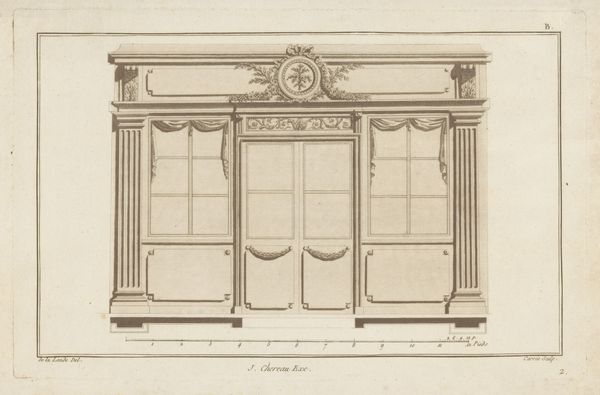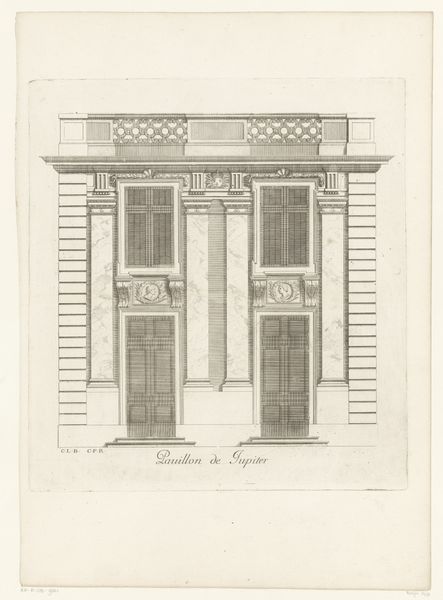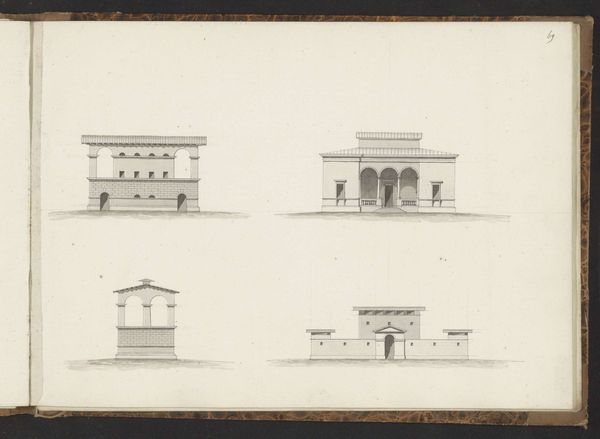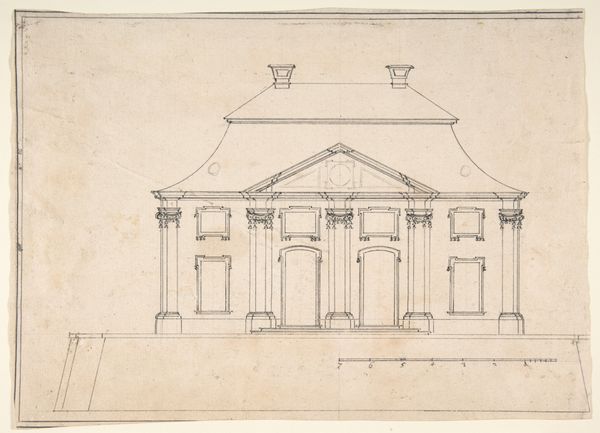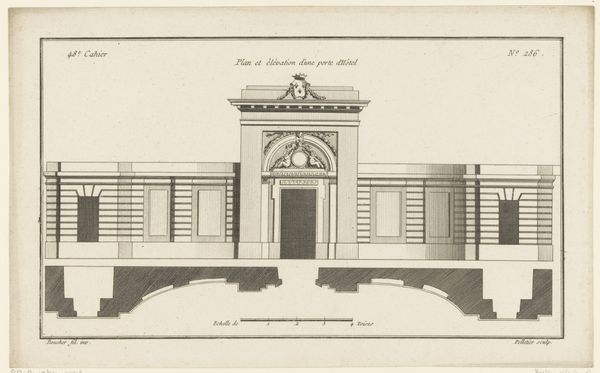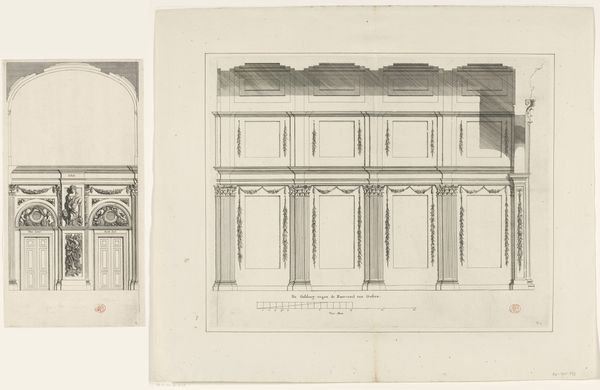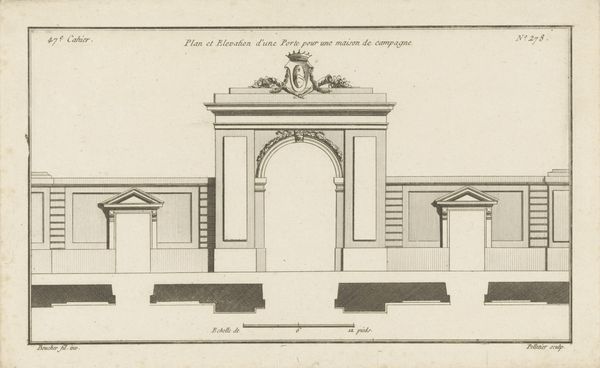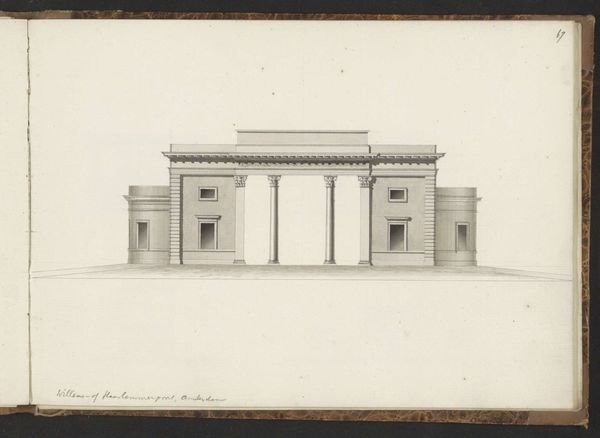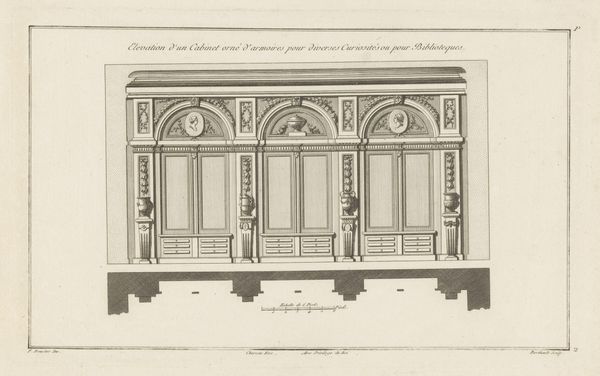
drawing, paper, ink, engraving, architecture
#
drawing
#
neoclacissism
#
paper
#
ink
#
geometric
#
line
#
academic-art
#
engraving
#
architecture
Dimensions: height 205 mm, width 331 mm
Copyright: Rijks Museum: Open Domain
Editor: Here we have "Twee vensters," or "Two Windows," an ink and engraving on paper created between 1772 and 1779 by Jean Pelletier. It's currently housed in the Rijksmuseum. The drawing features precise, clean lines, depicting two distinct window designs. What stands out to me is the stark contrast in their ornamentation. What's your interpretation of this work? Curator: Considering this work through a materialist lens, I am interested in the production of these images. What kind of labor went into crafting the designs? Consider that it is an engraving, meaning each line had to be etched and reproduced, so who was performing this meticulous process and for whom? What was the purpose? Was it to present model designs to be circulated among builders for replication? Editor: That’s fascinating, the thought that this isn’t just art for viewing but also a blueprint for something functional. It brings up the question of the role of the artisan versus the artist. Was Pelletier more concerned with the aesthetics or the practicality of the windows? Curator: Perhaps both, but the academic style, with its roots in neoclassicism, suggests a study of ideal forms. These windows become exercises in applying classical principles to contemporary architecture. The material reality of the window—wood, glass, labor—is mediated through the design. The finished structure embodies a very particular historical power structure. The engraver’s labor also brings attention to repetitive work. Can you imagine painstakingly copying these details repeatedly? Editor: Now that you point it out, that repetitive aspect and focus on standardized architectural components speaks to the rise of industrialization, in a way, doesn't it? It is like these windows can become an interchangeable unit, even though the individual craft is involved in this case. Curator: Precisely. It challenges traditional boundaries between high art and craft, highlighting the process of labor and materiality involved in creating these forms. It demonstrates a shift towards a more mechanized means of production. Editor: I hadn’t thought of it in terms of labor and production. I appreciate that perspective and how it makes me consider not only the visual element but also its historical and social implications.
Comments
No comments
Be the first to comment and join the conversation on the ultimate creative platform.

